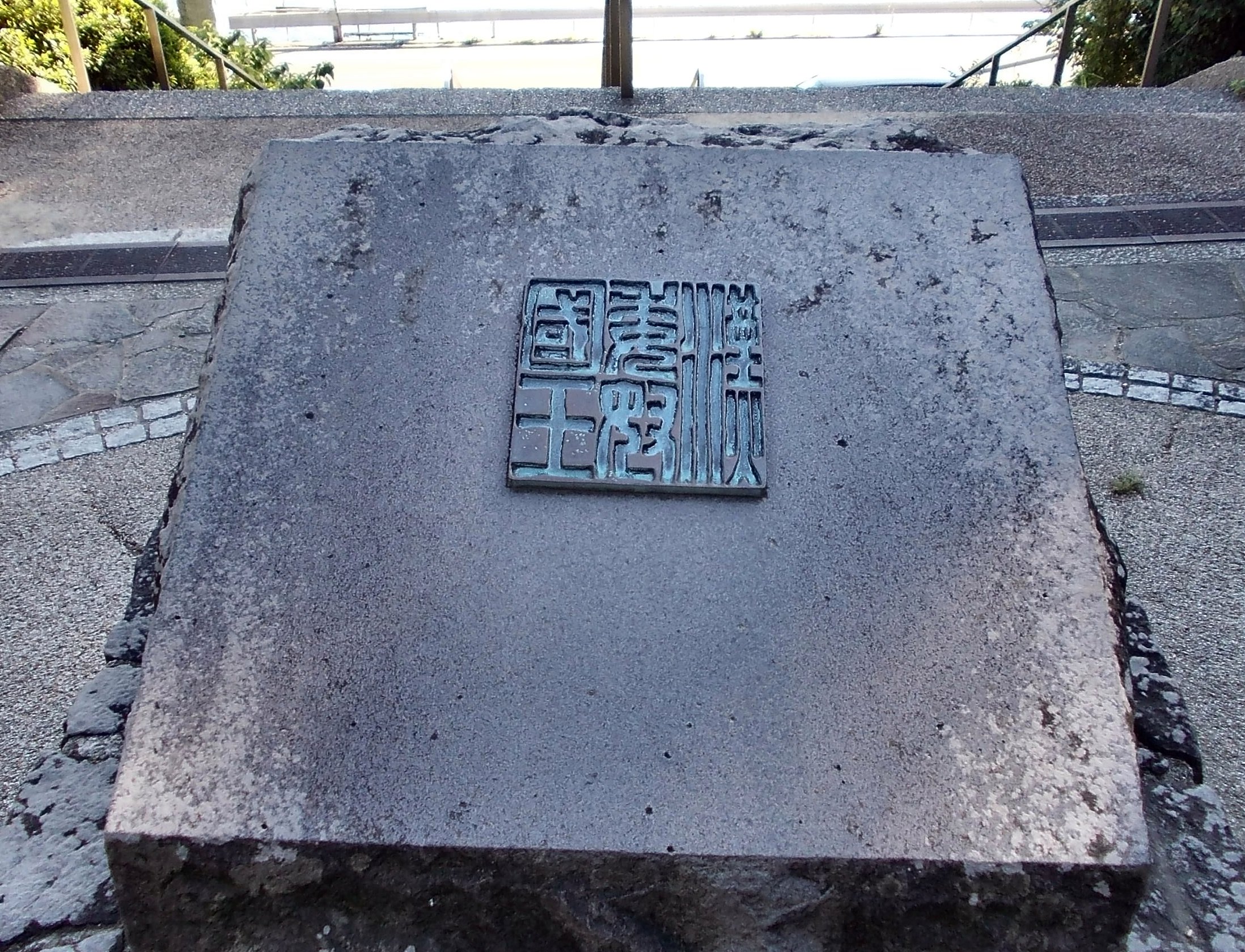Nakoku on:
[Wikipedia]
[Google]
[Amazon]
 was a stateIn Japanese, the character ĺ›˝/ĺś‹, read as ''koku'' (in
was a stateIn Japanese, the character ĺ›˝/ĺś‹, read as ''koku'' (in
 was a stateIn Japanese, the character ĺ›˝/ĺś‹, read as ''koku'' (in
was a stateIn Japanese, the character ĺ›˝/ĺś‹, read as ''koku'' (in on'yomi
are the logographic Chinese characters taken from the Chinese script and used in the writing of Japanese. They were made a major part of the Japanese writing system during the time of Old Japanese and are still used, along with the subsequ ...
) or ''kuni'' (in kun'yomi
are the logographic Chinese characters taken from the Chinese script and used in the writing of Japanese. They were made a major part of the Japanese writing system during the time of Old Japanese and are still used, along with the subsequen ...
), can be translated as "country" or "province" which was located in and around modern-day Fukuoka City
is the sixth-largest city in Japan, the second-largest port city after Yokohama, and the capital city of Fukuoka Prefecture, Japan. The city is built along the shores of Hakata Bay, and has been a center of international commerce since ancie ...
, on the Japan
Japan ( ja, 日本, or , and formally , ''Nihonkoku'') is an island country in East Asia. It is situated in the northwest Pacific Ocean, and is bordered on the west by the Sea of Japan, while extending from the Sea of Okhotsk in the n ...
ese island of Kyūshū
is the third-largest island of Japan's five main islands and the most southerly of the four largest islands ( i.e. excluding Okinawa). In the past, it has been known as , and . The historical regional name referred to Kyushu and its surround ...
, from the 1st to early 3rd centuries. Much of what is known about it comes from ancient records of both China and Japan.
According to the ''Book of the Later Han
The ''Book of the Later Han'', also known as the ''History of the Later Han'' and by its Chinese name ''Hou Hanshu'' (), is one of the Twenty-Four Histories and covers the history of the Han dynasty from 6 to 189 CE, a period known as the Lat ...
'', in 57 CE, Emperor Guangwu of Han
Emperor Guangwu of Han (; 15 January 5 BC – 29 March AD 57), born Liu Xiu (), courtesy name Wenshu (), was a Chinese monarch. He served as an emperor of the Han dynasty by restoring the dynasty in AD 25, thus founding the Eastern Han (Later ...
granted Nakoku an imperial seal, patterned after the Chinese jade
Jade is a mineral used as jewellery or for ornaments. It is typically green, although may be yellow or white. Jade can refer to either of two different silicate minerals: nephrite (a silicate of calcium and magnesium in the amphibole group ...
seals, but made of gold
Gold is a chemical element with the symbol Au (from la, aurum) and atomic number 79. This makes it one of the higher atomic number elements that occur naturally. It is a bright, slightly orange-yellow, dense, soft, malleable, and ductile ...
: the king of Na gold seal.
In return, that same year, Na sent envoys to the Chinese capital, offering tribute
A tribute (; from Latin ''tributum'', "contribution") is wealth, often in kind, that a party gives to another as a sign of submission, allegiance or respect. Various ancient states exacted tribute from the rulers of land which the state conq ...
and formal New Year's greetings. This seal was discovered over 1500 years later, by an Edo period
The or is the period between 1603 and 1867 in the history of Japan, when Japan was under the rule of the Tokugawa shogunate and the country's 300 regional '' daimyo''. Emerging from the chaos of the Sengoku period, the Edo period was character ...
farmer on Shikanoshima Island, thus helping to verify the existence of Nakoku, which was otherwise known only from the ancient chronicles. Engraved upon it are the Chinese characters (''Kan no Wa no Na-no-Koku-ĹŤ'', "King of the Na state of the Wa (vassal) of Han".
A reference is found in vol. 30 of the Chinese ''Book of Wei
Wei or WEI may refer to:
States
* Wey (state) (衛, 1040–209 BC), Wei in pinyin, but spelled Wey to distinguish from the bigger Wei of the Warring States
* Wei (state) (éŹ, 403–225 BC), one of the seven major states of the Warring States per ...
'' from the ''Records of the Three Kingdoms
The ''Records or History of the Three Kingdoms'', also known by its Chinese name as the Sanguo Zhi, is a Chinese historical text which covers the history of the late Eastern Han dynasty (c. 184–220 AD) and the Three Kingdoms period (220â ...
'', titled "The Account of the Easterners
The Easterners () were a political faction of the Joseon dynasty. This faction appeared during the reign of Seonjo of Joseon in sixteenth-century Korea. Originating from friends of Gim Hyowon, they soon encompassed most of the disciples of Jo ...
: A Note on the Wa" ( zh, 東夷傳‧ĺ€äşşć˘ť), to the continued existence of Nakoku in the 3rd century, naming the officials and stating that it contains over 20,000 homes. This section is known in Japan as the .
Some believe that Nakoku may also correspond to Na-no-Agata (), a principality which preceded Fukuoka City.
See also
* ''Na'' and ''Wa'' (ĺ€) *names of Japan
The word ''Japan'' is an exonym, and is used (in one form or another) by many languages. The Japanese language, Japanese names for Japan are Nippon () and Nihon (). They are both written in Japanese using the kanji .
During the third-century CE T ...
Notes and references